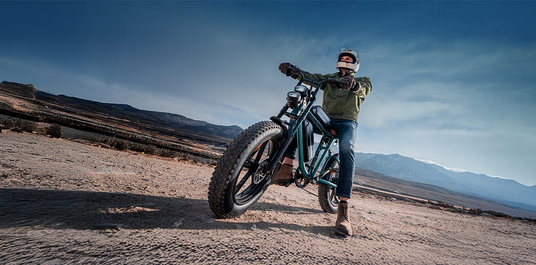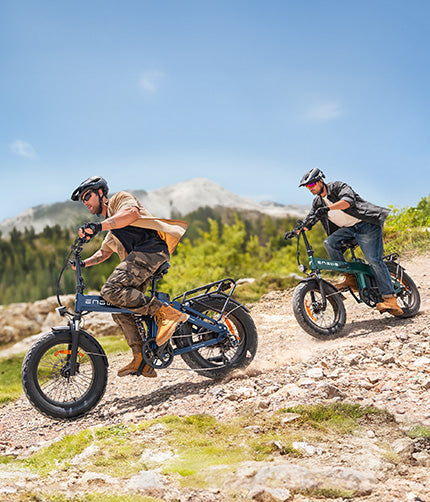The daily commute. For most of us in the UK, it’s an all-too-familiar procedure of packed trains, traffic jams and the general hassle of getting from A to B. But what if it didn’t have to be this way? What if your commute was something you could make free time out of, and the two-way commute a bit of light exercise? That’s the promise of the electric bike of today; specifically, the practical lightweight commuter e-bike. As a person who has ridden down so many city streets and watched urban transit evolve, I’ve learned that for the everyday rider, weight is not just a figure on a spec sheet; it is the thing that defines your experience every day. This guide is meant to clear through the noise and sift out what really matters when you’re in the market for that perfect, agile commuting companion.
What, Exactly, Is a Commuter E-Bike, ‘Lightweight,’ Anyway?
So first, let’s manage expectations. An electric bicycle will be heavier than a non-electric one because of the motor and battery. This is lightweight, in contrast to what Picture Editor Lasitha Gunathilake refers to as 'ultra-light.' In general, we are referring to bikes that weigh less than 25 kg. Why does this matter? Because a genuinely light model is only so if you can easily handle it. It’s a bike you can lug up a flight or two of stairs to your flat without strain, heave onto a wall-mounted rack, or wheel through a packed station. Here, clever design and material selection is key, typically making use of a 6061 aluminium alloy frame, offering a good mix of strength and weight. Anything heavier and you’re getting closer to a logistical challenge than a logistical solution.
The good news? You don't need to be counting calories at every meal or surviving on lettuce and garden hose as you ensure your waistline stays at a reasonable size.
So what if you turn up at the office block and the lift is not working? You're on the second floor. With a fat, heavy e-bike, this would be a dreaded, sweat-producing workout. It’s a bit of a drag if you’ve got a lightweight model. Imagine negotiating tight city centre roads thronged with pedestrians. A nimble, responsive ride-feel of a lighter 20-inch bike, but with the stability of a much larger one. Or imagine hoisting your bike onto a car rack for a weekend out of town. 24 kg vs 34 kg is massive and possibly a game changer in whether you take it at all. The true virtue of a light structure is not speed, and it’s not money — it’s that it annuls the small frictions of a day and makes a non-terrifying, reasonably fun, almost elegant chore out of what a commute should be (dumb but endurable).
Key Features to Consider When Picking Your Ultralight Buddy
Anatomy of a Bike
Beyond the overall number that is the weight of a bicycle, a few big-ticket items are going to dictate your ride. Pay close attention to these. A torque sensor is the ideal choice for a premium commute. Unlike some of the more basic cadence sensors that simply tell if you’re actually pedalling, a torque sensor reads how hard you’re pedalling. This makes for a power delivery that’s one of the most intuitive and impressively smooth we’ve felt, a sensation that comes from it feeling human-powered, just like everything else. The motor itself must be a sturdy enough 250W model (this is the highest allowable output on UK roads) so you get some proper assistance up hills, but without it being overkill. For city commuting, hydraulic disc brakes are a must. They provide much better stopping power and control in all weather, an essential safety feature when another car pulls out in front of you. Last but not least, consider a removable battery. This means you can take it inside your house or office to charge, a major benefit for the majority of UK citizens who don’t have a garage with a plug socket.

A Clear Example: The ENGWE P275 SE
And as a tangible example of this type of bike that delivers on these critical aspects, the ENGWE P275 SE stands tall in the crowd for the city commuter bike to rule them all! It is constructed on a robust 6061 aluminium alloy frame (ensuring we can keep the bike weight restricted to 24 kg overall). The real highlight here, though, is its ultra-responsive smart torque sensor that responds to your pedalling almost immediately, making the whole ride feel both incredibly smooth as well as natural. This is combined with a powerful yet street-legal 250W brushless motor which is well-suited for urban hills. A notable combination is its 36V 13Ah battery which, on the lowest assistance level, provides a range of close to 100 km on one charge – sufficient to last for a week’s worth of city commutes for most. Importantly, it also doesn’t compromise when it comes to safety and practicality, featuring powerful 160mm hydraulic disc brakes for when you need to stop in a hurry, a dependable SHIMANO 7-speed transmission, along with urban commuter seasonings such as integrated lights and mudguards. It’s a carefully considered package for today’s urban rider.

Living with Your Lightweight E-Bike: Easy Maintenance for a Long Lifespan
Just because you own a lightweight commuter e-bike doesn’t mean that you need to become a master mechanic. As for maintenance, other than changes to the Bafang components, on a day-to-day basis, it’s surprisingly no different than maintaining your standard bike. The most critical new habit is attention to your battery. To extend the life of your battery: Do not let it run dry, and store it inside somewhere with a moderate temperature, if at all possible, indoors and not left out in the cold winter. Wipe down your bike regularly to keep it clean; however, you should avoid using a high-pressure water jet which can push water into your bike’s sensitive electrics. Make sure your tyre pressure is holding for an efficient ride and check your brakes with a quick squeeze before you leave to make sure they feel tight and responsive. These little habits will help your e-bike run smoothly and dependably for years.

5 Key Questions about the Prospective E-Bike Commuter
1. Do I need a licence, tax or insurance to ride a lightweight commuter e-bike in the UK?
This doesn’t apply in the UK – as long as your electric bike adheres to the ‘electrically assisted pedal cycles’ (EAPC) regulations, you don’t need a license, tax, or insurance. The two key requirements are the motor must not have more than 250 watts of power and the electric assistance must stop when the bike reaches 15.5 mph (25 km/h). The bike should also be pedal-assist, in that, crucially, you must be pedalling for the motor to kick in.
2. Will the battery range actually live up to the promises made by the manufacturer?
The stated maximum distance, for example 100 km, will typically be based on very ideal conditions. This is typically a light rider on a flat surface with no wind and using the lowest PAS (PAS 1). In reality, that range is affected by hills, your weight, tyre pressure, how much you use higher assist levels, and even the ambient temperature. A practical distance to expect is something realistic, i.e., 20-30% less than the max advertised for mixed daily use - which is still more than enough for most commutes.
3. Is 250W enough power for hills in a City?
Absolutely. Although it doesn’t feel like a powerful motorcycle, 250W is a very considerable – and very welcome – boost. When you come to a hill, you’ll still be required to pedal and use the gears on your bike, shifting down as you normally would. But with the motor’s help, the climb will be a world of difference, and you’ll get to the top without being winded to a pulp.
4. How can I protect my pricey new e-bike from getting stolen?
Ensuring that e-bikes are secure is a priority. Buy at least one really good, solid lock (Sold Secure Gold remains the standard), ideally two of different designs (e.g., a D-lock and a heavy chain). If you can avoid it, don’t just lock the wheel of your bike — lock the frame, and lock it to a sturdy, immovable object like a dedicated bike rack. If you’re leaving it for long stretches, you should also take the removable battery and display with you. Not only would this make the bike less appealing to a thief, but it would also make it lighter to carry if you have to. Finally, there’s the peace of mind of having e-bike-specific insurance.
5. If I have to give up a little lightness for the sake of some more battery or more features?
This is the central trade-off when picking a commuter e-bike. The response is completely personal. If your commute isn’t going to be huge, and you live in a third-floor flat with no lift, that lower weight is the sensible choice, as you’ll quickly get tired of hauling around a heavy bike every day for only a little bit of extra range. But if you have a really long, hilly commute and secure, ground-floor storage at both ends, a heavier bike with a bigger battery may be a better match. Be real with yourself, and honestly assess your daily life until you hit the right balance for you.
Ultimately, the right lightweight electric bike makes your daily commute a job that turns into your favorite part of the day.









